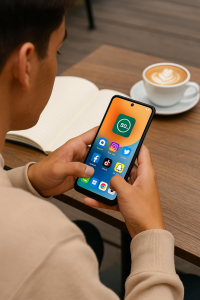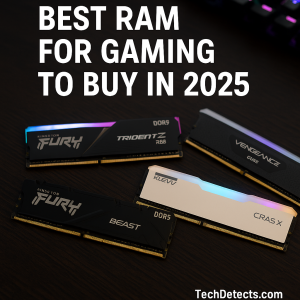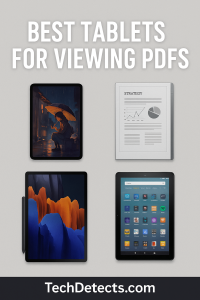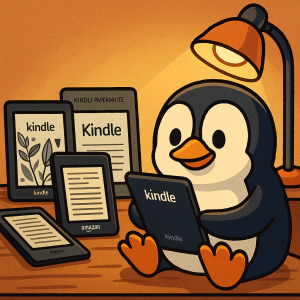Best Cheap Smartphone to Buy in 2025
Flagship phones keep getting pricier—but you don’t need to spend four figures to get a great experience. In 2025, budget phones deliver excellent cameras, smooth 120Hz screens, big batteries, and 5G. This expert buying guide breaks down real, widely available models by price tier and use‑case, so you can buy with confidence.
How we judge: daily speed, camera quality (especially HDR + night), battery life + charging, software support window, and network bands/5G reliability.
Quick picks (TL;DR)
- Best under $500 (camera & clean software): Google Pixel 8a
- Best under $300 (overall value): CMF Phone 2 Pro
- Best under $300 (Samsung ecosystem): Samsung Galaxy A16 5G
- Best under $300 (big battery + fast charge): OnePlus Nord CE4 Lite
- Best under $400 (balanced all‑rounder): Redmi Note 14 Pro (regional availability)
- Best under $250 (battery for days): Moto G Power (2025)
Prices are typical street prices and vary by region and promotions.

Price Tier 1 — Under $200 (Essentials that work)
If you only need messaging, social apps, light photos, and good battery life—this tier is plenty.
Solid options to watch for sales
- Moto G‑series budget (regional) – Clean Android feel, big batteries; prioritize models with at least 6GB RAM/128GB storage.
- Samsung Galaxy A05/A06 series (regional) – Pick the variant with 4–6GB RAM and NFC if you need tap‑to‑pay; One UI features with long security support.
What to expect: 720p–1080p displays at 60–90Hz, single usable rear camera, and 2–3 years of security updates. Avoid 3GB RAM models.
Price Tier 2 — Under $300 (The true sweet spot)
CMF Phone 2 Pro
Why it’s great: Outstanding value with a 120Hz AMOLED display, capable Dimensity‑class chipset, large 5000mAh battery, and a surprisingly versatile camera setup for the price. Accessories/case ecosystem is a bonus.
Best for: Anyone wanting the most features for the least money, with a modern design and reliable performance.
Good to know: 2–3 Android OS upgrades typical; IP rating is basic.
Samsung Galaxy A16 5G
Why it’s great: Samsung’s budget line finally nails the basics—bright 6.7″ AMOLED 90Hz display, all‑day 5000mAh battery, dependable main camera, microSD expansion, and years of security updates. Works seamlessly with Galaxy ecosystem apps and wearables.
Best for: Users already in the Samsung ecosystem or who value long software support and carrier availability.
Good to know: Camera stack is basic; fast charging is modest.
OnePlus Nord CE4 Lite
Why it’s great: Big 6.67″ 120Hz AMOLED, large battery with fast wired charging, and a 50MP main camera that’s consistent in daylight. OxygenOS is smooth, and the phone often dips under $300.
Best for: Buyers who want long screen‑on time and snappy charge speeds without breaking budget.
Good to know: Secondary cameras are simple; performance targets efficiency over raw power.
Price Tier 3 — Under $400 (Upper‑budget all‑rounders)
Redmi Note 14 Pro (regional availability)
Why it’s great: 120Hz AMOLED, strong mid‑range chip, big battery, and fast charging make it a terrific daily driver. Camera quality punches above price in good light and social‑media video.
Best for: Value hunters who can buy in regions where the Note series is officially sold.
Good to know: MIUI/HyperOS adds features—but also pre‑installs; check band support if importing.
Price Tier 4 — Under $500 (Camera & longevity first)
Google Pixel 8a
Why it’s great: Class‑leading HDR and night photography at the price, plus guaranteed long software support and Google’s smart features. The OLED display is bright and smooth, and day‑to‑day speed is excellent.
Best for: Anyone who wants the best camera under $500 and clean, long‑supported Android.
Good to know: Charging is modest; only a single rear telephoto is absent (digital zoom is decent thanks to Google’s processing).
Endurance pick — Moto G Power (2025)
Why it’s great: A budget workhorse with a big battery, efficient chipset, and simple software. Perfect for travelers, delivery workers, or students who prioritize uptime over cameras.
Best for: Battery‑first users who need two‑day life and don’t mind simpler cameras.
Good to know: Look for the version with 6GB+ RAM; camera systems prioritize daylight snapshots.
Buying Guide — What actually matters in a cheap phone
| Factor | Why it matters | What to aim for |
|---|---|---|
| Display | Readability + smoothness | 1080p OLED/AMOLED, 90–120Hz |
| Chipset & RAM | Everyday speed | Recent mid‑range SoC, 6–8GB RAM |
| Battery & charging | Uptime + convenience | 5000mAh, 25W+ wired (PD or brand fast charge) |
| Cameras | Social‑ready photos | 50MP main with good HDR; ignore gimmicky 2MP sensors |
| Storage | Apps/photos headroom | 128GB minimum (+ microSD if possible) |
| Software support | Longevity & security | At least 3 years security; 2 OS upgrades+ |
| 5G & bands | Network compatibility | Sub‑6 5G with your carrier bands; dual‑SIM if needed |
Frequently Asked Questions
Q: Should I buy 5G in a budget phone?
A: Yes—most models now include sub‑6 5G with minimal battery penalty. It helps resale value and keeps speeds consistent in crowded areas.
Q: OLED vs LCD at this price?
A: Prefer OLED/AMOLED for contrast and outdoor visibility. LCD can still be fine in sub‑$200 models—just target 90Hz for smoothness.
Q: How many years of updates will I get?
A: Pixels and newer Samsung A‑series lead on updates. Expect 3–4 years of security on the better budget phones; avoid anything promising less than 2 years.
Q: Importing a phone to save money—safe?
A: Only if you verify LTE/5G bands, warranty, and Google Play certification. Some imported variants miss crucial bands in your country.
Final Thoughts
The best cheap smartphone in 2025 depends on your priorities: camera & updates (Pixel 8a), maximum features per dollar (CMF Phone 2 Pro), ecosystem + support (Galaxy A16 5G), battery + charging (Nord CE4 Lite), and balanced power users on a budget (Redmi Note 14 Pro). Match these strengths to your needs and you’ll save money without sacrificing the experience that matters day to day.






